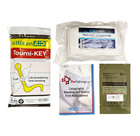Storage Of Oxygen
Want to watch this video? Sign up for the course
or enter your email below to watch one free video.
Unlock This Video Now for FREE
This video is normally available to paying customers.
You may unlock this video for FREE. Enter your email address for instant access AND to receive ongoing updates and special discounts related to this topic.
Safe Storage of Oxygen Cylinders: Guidelines and Regulations
Importance of Proper Oxygen Cylinder Storage
Ensuring Safety and Preventing Damage
- Workplace Risk Assessments: Checking for Appropriate Storage Rules
- General Rules for Medical Oxygen Cylinder Storage:
1. Sheltered and Dry Storage
Protecting Cylinders from Environmental Extremes
2. Separation from Non-Medical Cylinders
Preventing Mixing of Medical and Non-Medical Gases
3. Strict Rotation of Cylinders
Ensuring First-In, First-Out Usage
4. Separation within the Storage Area
Keeping Different Medical Cylinders Apart
5. Vertical Storage for F-Size Cylinders and Larger
6. Horizontal Storage for E-Size Cylinders and Smaller
Adhering to Specific Storage Orientations
7. Warning Notices
Prohibiting Smoking and Naked Flames
8. Emergency Services Notification
Ensuring Emergency Response Awareness
9. Portable Oxygen Kits and Vehicle Storage
Applying Guidelines for Safe Portable Kit and Vehicle Storage
Following these guidelines for the secure storage of oxygen cylinders in compliance with workplace assessments and regulations.
Recommended Products For You
WoundClot Trauma 20cm x 30cm
£37.95 + VAT
WoundClot Trauma 8cm x 20cm
£17.95 + VAT
Cyclist Trauma / Emergency Kit
£55.00 + VAT
Woundclot Trauma Dressing 10cm x 10cm
£11.95 + VAT
Lifesaver Kit Ultra - Green
£99.00 + VAT
Animal First Aid Kit
£12.00 + VAT
DefibSafe DS3 AED Cabinet IP66 Yellow/Green
£495.00 + VAT
First Aid Upgrade Kit
£14.00 + VAT
_-Trauma_20x30_CE.jpg)
_-Trauma_8x20_CE.jpg)

_-Trauma_10x10_CE.jpg)



